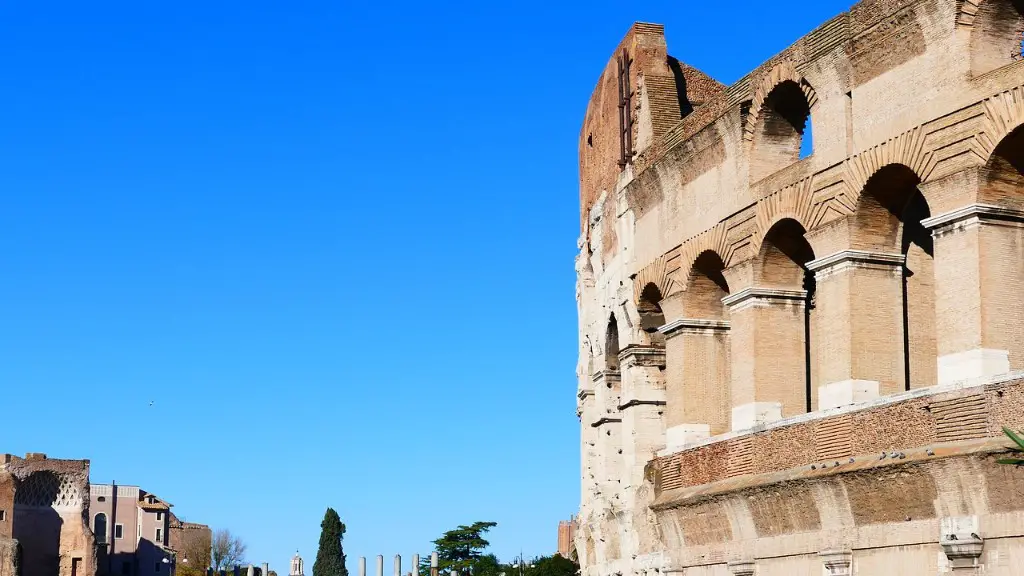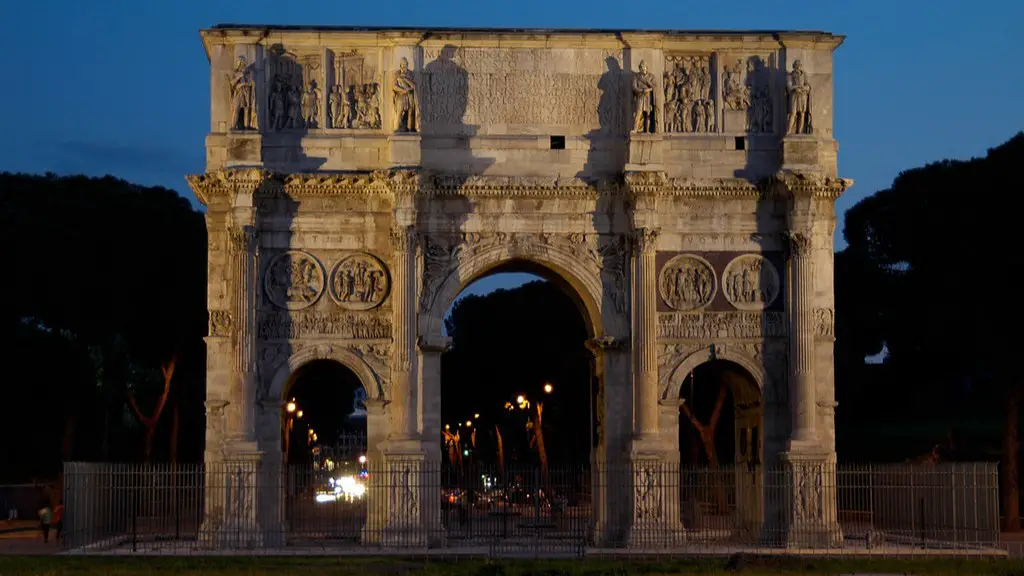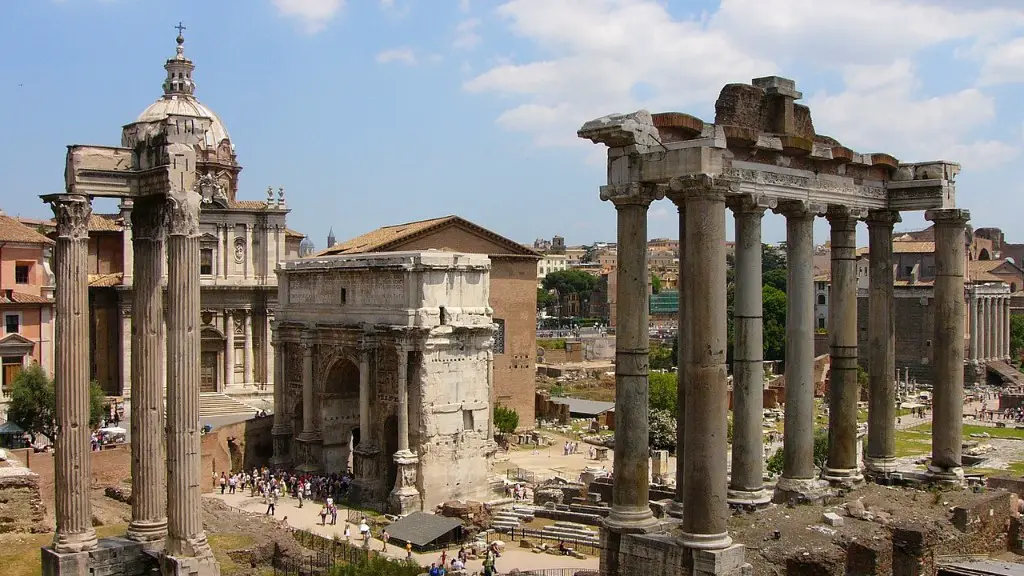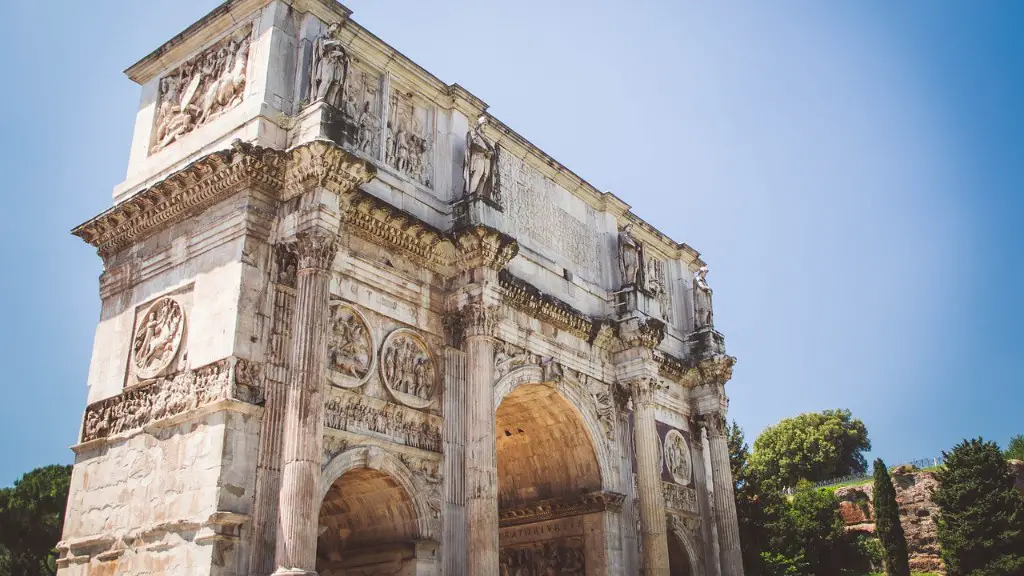Origin and History of the Pantheon
The Pantheon is an ancient temple located in Rome, Italy. Built around 126 AD by Emperor Hadrian, the Pantheon was initially dedicated to all the gods of Ancient Rome. In later years it was dedicated to the Virgin Mary, and is now a Catholic church. Over the course of its history, the Pantheon has served many purposes, from a temple to a theater to a burial ground. It has been an enduring symbol of the city of Rome and its powerful history, and is one of the city’s most visited tourist attractions.
The Pantheon is an example of advanced Roman engineering and design. It stands at 43 meters tall, and its dome is 43.3 meters wide. The dome is one of the largest unsupported concrete domes ever constructed, and was made of pozzolana, a type of volcanic ash. This dome gave the Pantheon a grand appearance unlike any other in Rome. The Pantheon also features a circular design with a portico of granite Corinthian columns which leads up to the entrance, supported by an inner and outer wall.
The Pantheon stands in the Roman Forum, and has become an iconic part of the city, symbolizing the grandeur of the Roman Empire. Even in its ruined state, it has become a monument to that soaring age of antiquity, and is covered with inscriptions, bas-reliefs, and sculptures. Many of these works of art were commissioned by Emperor Hadrian and other members of the Roman nobility and clergy, who wanted to commemorate their legacies.
The Pantheon has also been used for many different purposes. Emperor Hadrian had it initially designed as a temple dedicated to the gods of Ancient Rome, but in 609 AD it was converted into a Christian church. It has also been used as a burial ground for renowned figures, including many of the kings of Italy and the Italian artist Raphael.
Architectural Style and Features of the Pantheon
The architectural style of the Pantheon is unique and breathtaking, making it one of the most recognizable structures in Rome. Its iconic dome, which covers an inner chamber, is constructed of concrete and is lined with marble, giving the Pantheon a stunningly beautiful interior. The interior of the Pantheon is 43 meters in diameter and is lit by a single oculus at the top of the dome.
The exterior of the Pantheon features a portico of granite Corinthian columns, which give it an impressive façade. There is also a grand pediment, which welcomes visitors to the Pantheon from the side streets of Rome. Inside the Pantheon are six Corinthian columns which are said to represent the canon of proportion that was used by the ancient Greeks to create perfect forms.
Built with a combination of concrete and brick, the Pantheon has remained largely intact for the past 2000 years. This is due to the fact that it was built using pozzolana, a type of volcanic ash, which is particularly resilient to erosion and other forms of weathering. This material was not widely used in Ancient Rome, and its use in the construction of the Pantheon makes it even more remarkable.
Impact and Symbolism of the Pantheon
The Pantheon is one of the most impactful and iconic structures ever built in Rome. Not only does it represent the grandeur of the Roman Empire, but it also serves as a symbol of the city’s resilience and strength. Despite wars, fires, and earthquakes, the Pantheon has remained standing for millennia, a testament to the might of Rome.
Over the course of its history, the Pantheon has come to represent much more than a picturesque structure in the heart of Rome. Emperors, kings, and the clergy have all devoted themselves to the upkeep of the Pantheon, hoping to leave their mark on the city. This devotion to the Pantheon has been seen as a sign of respect for the city, and it has become a source of inspiration and motivation for many of its inhabitants.
The Pantheon also serves as a reminder of the great achievements of Ancient Rome. Because the Pantheon is one of the few structures from that era that has survived in mostly pristine condition, it stands as a reminder of the height of the city’s greatness. It is a testament to the skill and ingenuity of the Roman engineers, and a reminder of the glory of the Roman Empire.
Modern Uses of the Pantheon
Today, the Pantheon is one of the most visited tourist sites in Rome. Its iconic dome and grand architecture attract millions of visitors each year, eager to soak up the history and grandeur of the structure. The Pantheon also serves as a place of worship for many people, both as a Catholic church and as a place to pay homage to the gods of Ancient Rome. Additionally, it is used to host various cultural performances, art installations and exhibitions.
The Pantheon is a symbol of Rome and a reminder of the city’s long, rich history. It has endured for centuries, surviving fires and earthquakes, and still stands tall as a testament of ancient engineering and design.
Archaeological Discoveries of the Pantheon
Archaeological excavations of the Pantheon site have yielded several interesting finds. In addition to uncovering the original foundation and portico, archaeologists have located inscriptions and funerary urns which bear evidence to the importance of the site in antiquity. These artifacts indicate that the Pantheon was used as a temple and theater, as well as a burial site for members of the Roman elite.
In recent years, archaeological exploration of the site has continued, uncovering more clues about the history of the site. Excavations of the Pantheon are ongoing and have become a popular field of study for archaeologists. As more and more of the site’s secrets come to light, visitors to the Pantheon can gain a deeper understanding of its long and varied history.
Preservation of the Pantheon
In the past two millennia, the Pantheon has faced various threats, including fire and weathering. It has survived these threats, however, and today the Pantheon remains largely intact. This is due to the various initiatives aimed at preserving the site. In recent times organizations such as Save the Pantheon have undertaken various conservation efforts to maintain the structure’s condition. This organization works to raise funds, awareness and enhance the public understanding of the Pantheon’s importance. Other organizations, such as the Pantheon Restoration Project, are also dedicated to the preservation of the structure.
The Pantheon is an iconic part of Rome and an enduring reminder of its history and culture. As the world’s oldest standing dome, it has become an important part of the city’s identity. Thanks to the efforts of preservationists, the Pantheon and its many secrets can be enjoyed by generations to come.
Importance of the Pantheon
The Pantheon is one of the most important and iconic structures in Rome. It stands as a testament to the city’s greatness and the skill of its ancient engineers. For centuries, it has been an important place of worship and a source of inspiration for many of its citizens. It is an enduring monument of the power and glory of Ancient Rome, and a popular touristic attraction.
The Pantheon is an enduring symbol of the city, and its tremendous impact on the world cannot be overstated. Its history and its importance to the city of Rome make it an irreplaceable piece of history, and a reminder of the city’s grand past.




